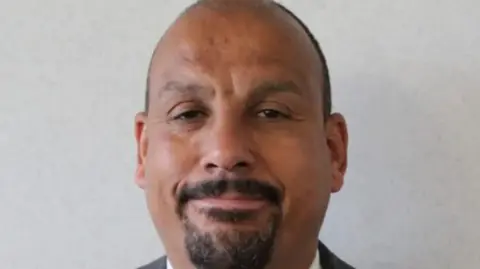The courtroom proceedings regarding the trial of Ricky Jones, a Labour councillor from Dartford, have elicited considerable attention due to the serious allegations he faces. Accused of encouraging violent disorder during an anti-fascist protest, Jones’ trial has taken place at Snaresbrook Crown Court. As the court hears the evidence, damning accusations have surfaced, suggesting that Jones was “rabble rousing” a crowd that could have potentially turned violent.
On August 7, 2024, at a demonstration in Walthamstow, Jones was recorded making inflammatory remarks about far-right protesters. He refers to them as “disgusting Nazi fascists” in a speech amplified through a public address system at the crowded event. Footage from the demonstration, which has made its way into the public eye, shows Jones inciting violence, going as far as suggesting that “their throats need to be slit,” while mimicking the motion with his finger across his neck. Such statements have raised alarm, particularly as the atmosphere within the gathered crowd was described by witnesses as a “tinderbox.”
As the prosecution’s opening argument unfolded, Ben Holt detailed the events leading up to the protest and the escalating tensions in the UK surrounding immigration issues. The prosecution emphasized that Jones had received prior warnings against attending the protest, which was reportedly organized in response to comments made by activist Tommy Robinson regarding a planned protest outside an immigration center. Despite this, Jones chose to attend the counter-protest organized by Stand Up to Racism, which was attended by thousands.
Holt’s comments highlight that rumours had circulated about potential violence at the protest, which may have been warranted given the recent violent outbreaks across the UK, particularly in response to tragic events such as the murder of three children in Southport. Holt underscored that during a time characterized by increasing tensions, Jones, as a Labour councillor, was fully aware of the volatile atmosphere and the implications of his statements on the crowd.
In a further twist, it was revealed that prior to the protest, Jones had been sent images related to far-right groups that were allegedly linked to acts of violence, such as stickers containing razor blades. This information was presented to emphasize that Jones had not only been informed but was actively engaged with the contentious climate surrounding immigration and protests in the country.
The court proceedings continue to unfold, and as the trial progresses, Jones maintains his innocence by denying the charges. The result of this trial could have significant implications for Jones’ political career and for the Labour Party, which has already suspended him following his arrest. The community and various stakeholders have been keeping a close watch on the developments of this case, which stands at the intersection of political discourse and public safety. The outcome of these proceedings may provide insight into broader societal tensions and the responsibilities of public representatives in such fluid and potentially explosive environments.
As attention on this case remains heightened, it serves as a reminder of the powerful nature of political rhetoric and the thin line that can exist between passionate advocacy and incitement to violence. The court’s decision, ultimately, will shape the narrative surrounding public protests in the UK and may set a precedent for how similar cases are handled in the future.











